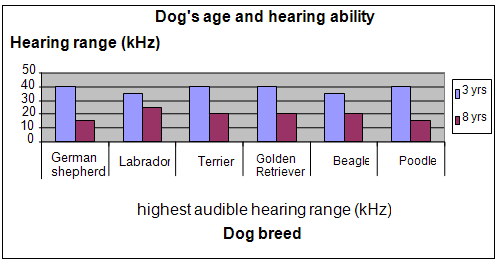| Complexity level: | 8 |
| Project cost ($): | 200 |
| Time required: | 1 day to prepare, 1 day for the science project experiment |
| Material availability: | High frequency sound generators may be obtained from a physics lab or purchased. They are fairly inexpensive. The participation of many different breeds of dogs, of different ages, is required. Try asking friends and family if they have dogs that fit the p |
| Safety concerns: | Ensure that the dogs are handled at all times by a qualified dog trainer, to avoid being bitten/injury. It is possible that the dogs may become agitated by the high frequency sounds. |
Hypothesis
Overview
Scientific Terms
Materials
Procedure

Results
Conclusion
Also consider
References
Related videos
Hey there! Here are some awesome videos about this science project that we think you'll really like. They're not only super fun, but they'll also help you learn more about the science behind the project. So sit back, relax, and get ready to have some fun!!


